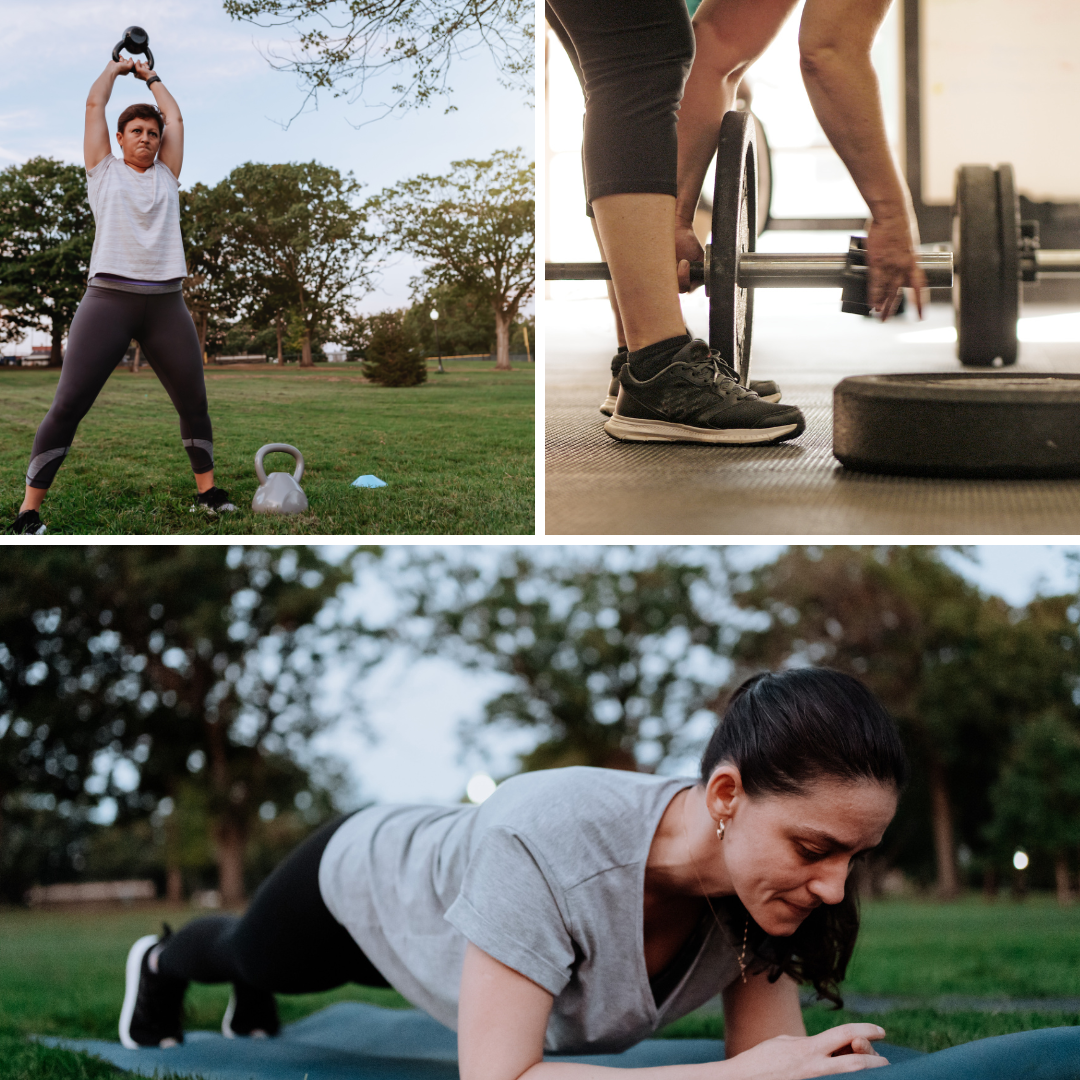The Power of Protein and Strength Training for Midlife Women's Health and Weight Management
As we enter midlife, our health needs evolve, requiring us to be more intentional about nourishing our bodies and about how we approach exercise. Many midlife women must focus more on two critical components: consistently eating adequate protein and strength training. Adequate protein and strength training are essential for maintaining or improving your physical health and supporting weight management efforts as you age. Read more in Rumblings blog The Power of Protein and Strength Training for Midlife Women.
Embrace the Power of Movement and Healthy Eating in Midlife
As you navigate through midlife, your relationship with exercise and healthy eating becomes increasingly essential. Many women find themselves struggling with outdated societal narratives that discourage physical activity and proper nutrition and are confused by the conflicting ‘noise’ found in social media... However, embracing movement and a balanced eating pattern diet can lead to a vibrant, healthy life.
In this blog post, you'll explore how resetting your mindset around exercise and nutrition can transform your midlife journey. Learn how to overcome common obstacles, incorporate effective workout routines, and adopt healthy eating habits that support your overall well-being and vitality as you age.
Embrace the Journey: Rediscover Purpose in Midlife
Embrace the journey of midlife with courage and resilience. Rediscover purpose, navigate transitions, and find fulfillment in this new chapter of life. Join us as we explore the challenges and opportunities of midlife, offering insights, inspiration, and practical tips for living your best life.
Embracing Technology: Redefining Aging for Midlife Women
While caring for aging parents, midlife women are redefining aging through technological innovation. From wearables to virtual communities, technology presents opportunities to enhance health, foster connections, and pursue new adventures. Discover how embracing technology empowers midlife women to redefine aging on their own terms, unlocking boundless possibilities for a vibrant future.
The Profound Dual Purpose of Travel: Lost and Found
Traveling goes far beyond exploring new landscapes and experiencing different cultures; it’s a journey of self-discovery and transformation. In the words of George Santayana, travel is both a means to lose and find ourselves. Beyond the familiar narrative presented in newspapers and media, travel offers a unique perspective that sharpens our awareness, challenges our assumptions, and enriches our understanding of the world.
Unlocking the Secrets to Aging Gracefully
Aging is inevitable, but it doesn't mean we must passively accept its effects. This comprehensive blog post explores the power of functional training in defying the physiological challenges of aging. Functional training is vital in preserving youthful vitality.
Discover how functional training can defy the physiological challenges of aging. Explore what functional training is and why it's crucial for preserving vitality as you age. Whether you're new to muscle fitness or looking to enhance your current routine, this comprehensive guide provides valuable insights into aging gracefully.
Lasting Change Unleashed: Discover Essential Techniques to Overcome Challenges and Create a Supportive Environment
Unlock the secrets to lasting change and transformation in midlife. Discover essential techniques to overcome challenges, shift your identity, and create a supportive environment. Dive into this quick tutorial, where you'll learn the importance of a renewed vision, effective strategies to reduce friction, and how to make healthier choices easier. Embrace the steps to sustainable behavior change and unlock the path to a vibrant and fulfilling midlife journey.
How to Build Resiliency in Midlife
We all face life events and unexpected challenges that impact our daily routines. Unfortunately, many people don’t have the resiliency skills to help them reset after a setback, life event, or trauma. The hope is that we can overcome the setbacks and realize our healthy lifestyle can support us through challenging times and help us handle hard situations with more energy and focus. Check out these tips to build resiliency skills to help you navigate ups and downs on your behavior change journey.
Midlife Transitions and Challenges: A Call for a Renewed Vision
You feel a “rumbling” inside yourself that your life should be different from what it is right now. You’re not alone. It’s common to experience an internal rumbling—a feeling something should be different or something needs to change. However, your old identity may be holding you back and sabotaging the future you. You may be stuck in old behaviors that are not aligned with who you are in midlife or who you want to be. It’s time to reimagine your midlife vision!
Our Tip to Banish the Midlife Blues
Feeling blue in midlife is common. It’s a time of a lot of change in an uncertain world. Creating a list of our accomplishments and successes over the last two years helped us feel grateful, content, and ok. Making this list, reflecting on it, celebrating change, and being grateful, helped us feel better. It served as a reminder that even when things happening in the world around us seems bleak, it’s possible to experience joy.
Don’t miss a blog post - sign up for the Rumblings emails to receive posts delivered straight to you email inbox!










